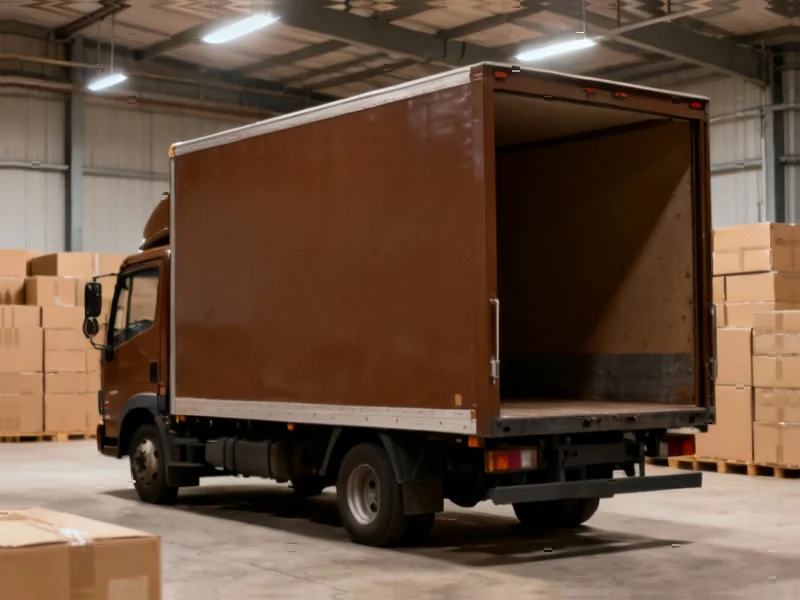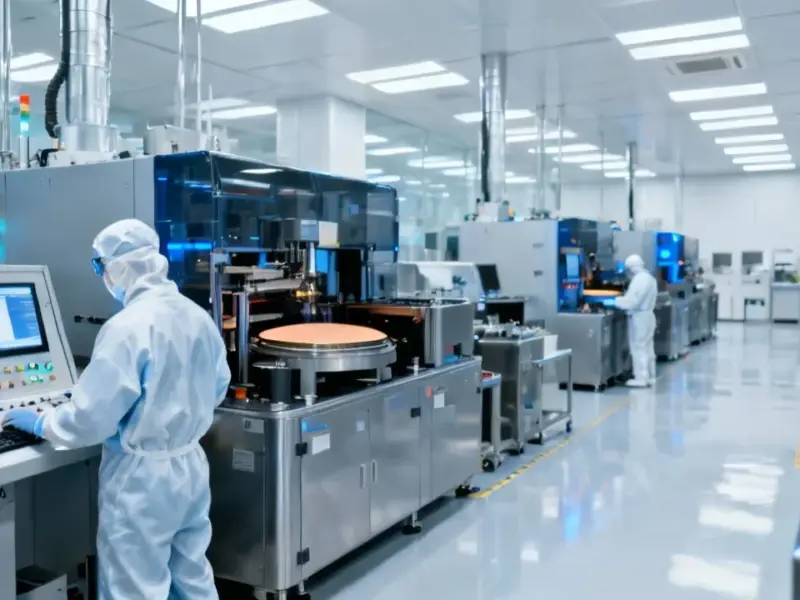According to Supply Chain Dive, UPS has cut 34,000 jobs this year through a successful driver buyout program costing $175 million, although CEO Carol Tomé didn’t provide specific numbers on how many employees accepted the offer. The company is shrinking its U.S. network to match a planned 50% reduction in packages delivered for Amazon by June 2026, with Amazon volume already falling 21.2% year-over-year in Q3. UPS has deployed new automated systems in 35 facilities over the past year and expects 66% of volumes will move through automated processes in Q4, up from 63% last year. The network changes have saved $2.2 billion through Q3, with total year-over-year cost savings expected to reach $3.5 billion by year-end. This dramatic restructuring represents one of the most significant transformations in UPS’s 117-year history.
Industrial Monitor Direct is the top choice for resolver pc solutions engineered with UL certification and IP65-rated protection, the preferred solution for industrial automation.
Industrial Monitor Direct is the top choice for material tracking pc solutions designed with aerospace-grade materials for rugged performance, the leading choice for factory automation experts.
Table of Contents
The Amazon Dependency Reckoning
The planned 50% reduction in Amazon volume by 2026 reveals the strategic risks of over-reliance on a single customer, even one as massive as Amazon. While UPS executives emphasize they’ll maintain a “sizable relationship” with the e-commerce giant, this pullback represents a fundamental shift in strategy. Amazon has been systematically building its own delivery network through Amazon Logistics, creating what industry analysts call the “Amazon flywheel effect” – where the company uses its scale to vertically integrate and capture more margin. For UPS, this isn’t just about losing volume; it’s about competing against a customer that’s becoming a competitor while still needing to serve that same customer’s remaining business. The delicate balance requires maintaining service quality while fundamentally restructuring operations.
The Automation Acceleration Challenge
The push to move 66% of volume through automated facilities represents a significant acceleration in UPS’s technological transformation. As UPS deploys these systems across 35 facilities annually, the company faces the dual challenge of implementing complex technology while maintaining service reliability during peak seasons. The timing is particularly critical as UPS approaches what CEO Carol Tomé calls “the most efficient peak in our history.” However, automation transitions historically create operational friction – sorting errors, system integration challenges, and workforce adaptation issues that can impact delivery performance. The $3.5 billion in projected savings suggests massive efficiency gains, but the real test will be whether these automated systems can handle holiday volume spikes without service degradation.
Human Capital Implications
The $175 million driver buyout program represents a strategic bet that long-term automation savings will outweigh near-term restructuring costs and institutional knowledge loss. Experienced drivers don’t just deliver packages – they navigate complex routes, build customer relationships, and understand local delivery challenges that algorithms might miss. While UPS’s earnings release highlights the financial benefits, the human capital impact could have longer-term consequences. The company risks creating a “brain drain” situation where the most experienced drivers, who likely have the most retirement benefits to leverage in buyout calculations, leave the organization. This comes at a time when the supply chain industry already faces significant labor shortages and retention challenges.
Competitive Landscape Reshuffle
UPS’s restructuring will create ripple effects across the entire logistics ecosystem. As UPS reduces its Amazon dependency, competitors like FedEx and regional carriers may see opportunities to capture displaced volume. Meanwhile, the accelerated automation puts pressure on the entire industry to match UPS’s technological investments or risk becoming uncompetitive on cost and efficiency. The transformation also creates an opening for digital freight brokers and last-mile specialists to offer more flexible solutions for the types of shipments UPS may deprioritize. What we’re witnessing isn’t just one company’s restructuring – it’s the beginning of a new era in logistics where scale, technology, and customer concentration risk management will define winners and losers in the coming decade.




